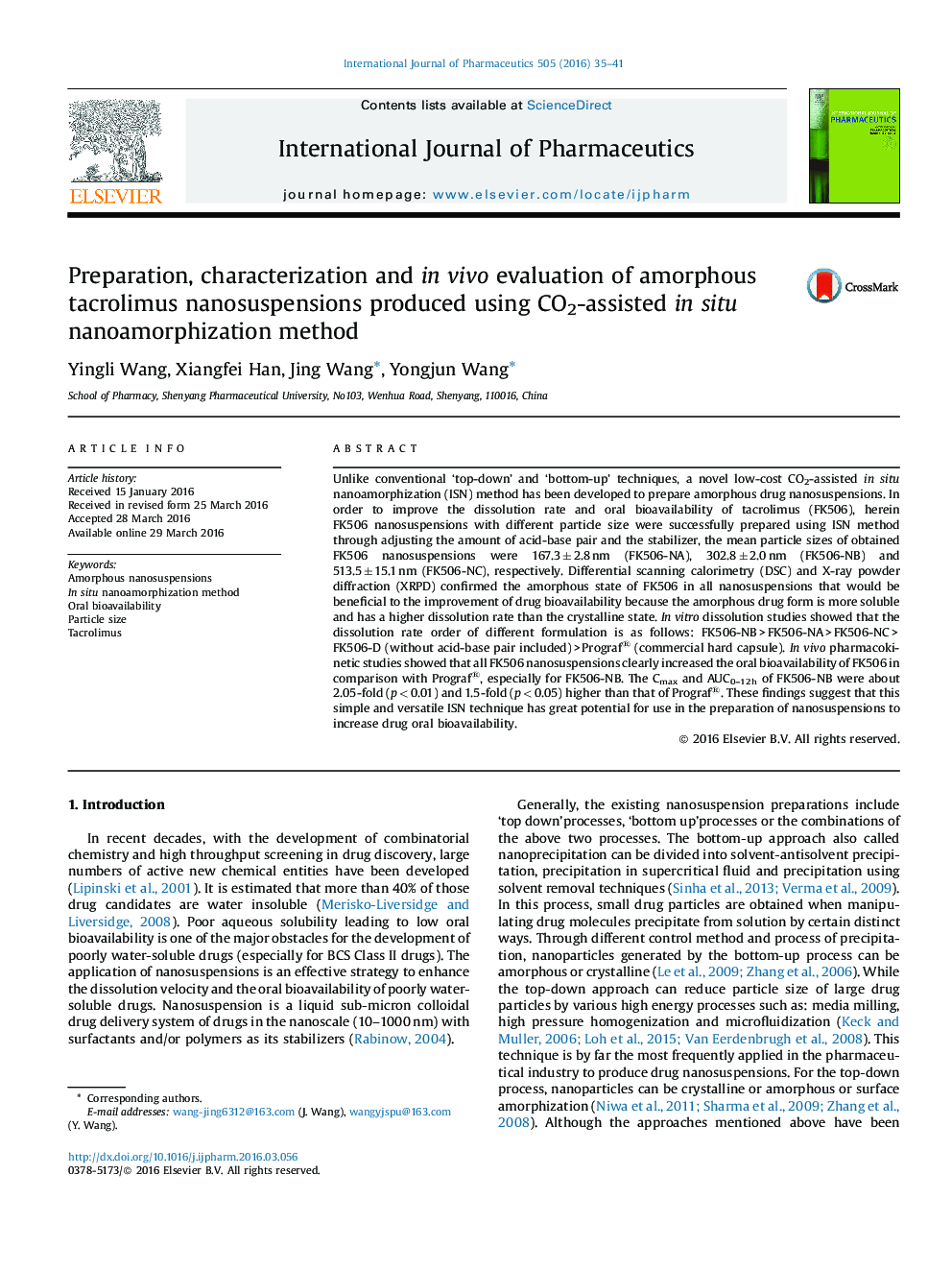| Article ID | Journal | Published Year | Pages | File Type |
|---|---|---|---|---|
| 2500882 | International Journal of Pharmaceutics | 2016 | 7 Pages |
Unlike conventional ‘top-down’ and ‘bottom-up’ techniques, a novel low-cost CO2-assisted in situ nanoamorphization (ISN) method has been developed to prepare amorphous drug nanosuspensions. In order to improve the dissolution rate and oral bioavailability of tacrolimus (FK506), herein FK506 nanosuspensions with different particle size were successfully prepared using ISN method through adjusting the amount of acid-base pair and the stabilizer, the mean particle sizes of obtained FK506 nanosuspensions were 167.3 ± 2.8 nm (FK506-NA), 302.8 ± 2.0 nm (FK506-NB) and 513.5 ± 15.1 nm (FK506-NC), respectively. Differential scanning calorimetry (DSC) and X-ray powder diffraction (XRPD) confirmed the amorphous state of FK506 in all nanosuspensions that would be beneficial to the improvement of drug bioavailability because the amorphous drug form is more soluble and has a higher dissolution rate than the crystalline state. In vitro dissolution studies showed that the dissolution rate order of different formulation is as follows: FK506-NB > FK506-NA > FK506-NC > FK506-D (without acid-base pair included) > Prograf® (commercial hard capsule). In vivo pharmacokinetic studies showed that all FK506 nanosuspensions clearly increased the oral bioavailability of FK506 in comparison with Prograf®, especially for FK506-NB. The Cmax and AUC0–12 h of FK506-NB were about 2.05-fold (p < 0.01) and 1.5-fold (p < 0.05) higher than that of Prograf®. These findings suggest that this simple and versatile ISN technique has great potential for use in the preparation of nanosuspensions to increase drug oral bioavailability.
Graphical abstractFigure optionsDownload full-size imageDownload high-quality image (148 K)Download as PowerPoint slide
